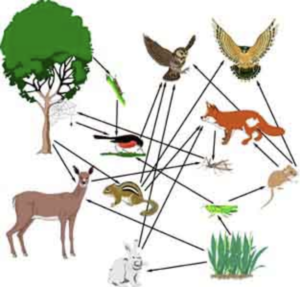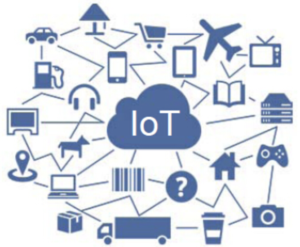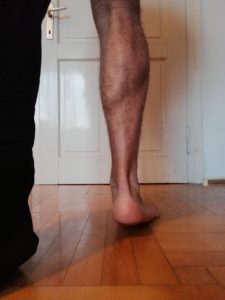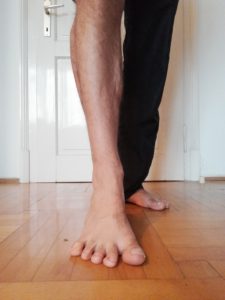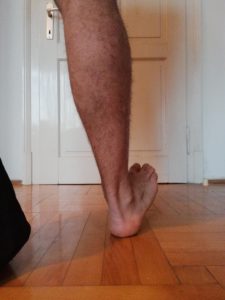-
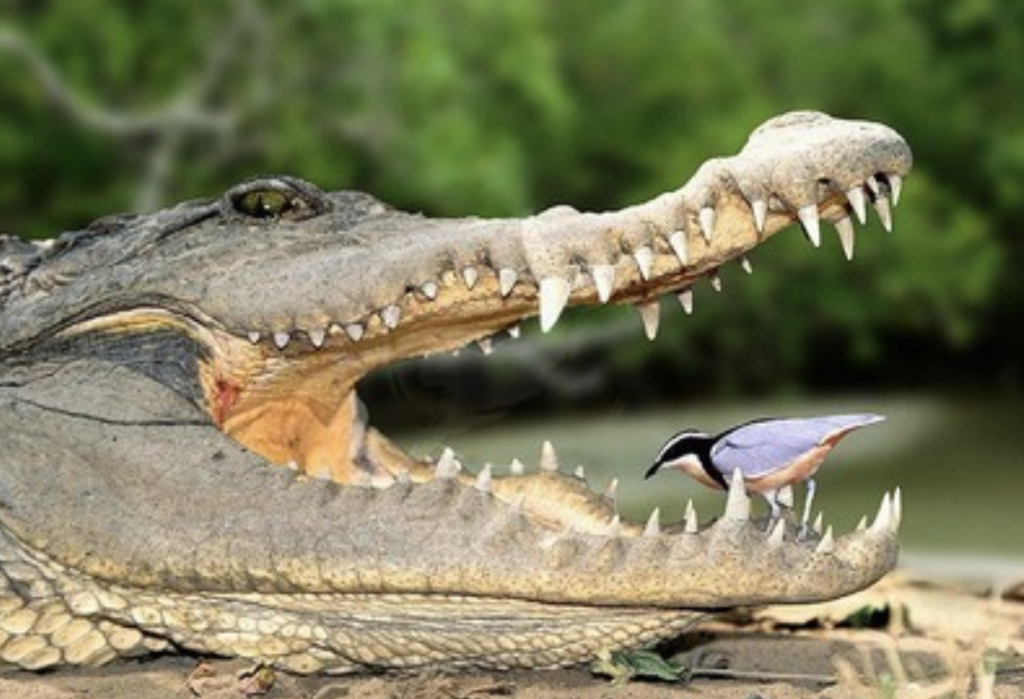
The symbiotic relationship between a crocodile and plover for the benefit of both species (smallscience.hbcse.tief.res.in) IoT – What is the internet of things?
The Internet of things (IoT) is a system of interconnected computing sensors able to transfer data over a network. IoT does not require direct human involvement to function. Chips implanted in devices or machinery combine operational technology (OT) with information systems (IT). Real-time data exchange through IoT allows for interoperability, enhancing efficiency and performance of a device, product, or service.
IoT in the workplace and beyond
In 2016, the top three industries in IoT spending were manufacturing, transportation, and utilities. Global spending on IoT is projected to reach $1.3 Trillion in 2020 (IDC). According to Statista.com, a leading provider of market and consumer data, the number of connected devices will increase six-fold from 15 billion devices in 2015 to 75 billion in 2025.
Not only will IoT be the standard in the workplace, but it will also be pervasive in our private lives, from personal belongings to inside our bodies. According to a 2018 article from Business Insider, thousands of Swedes are having microchips implanted in their bodies, no longer requiring them to carry keys or IDs. A simple wave of the hand unlocks the house door or identifies who you are.
IoLT – The interconnectedness of living things
The interconnectedness of living things is the interdependence of all organisms. For millions of years, the animal and plant kingdom has been developing and evolving a complex and intricate system of interdependency that benefits all species. Humans are becoming more cognizant of the need to care for the natural resources that all living organisms, humans included, are dependent upon.
Nature’s interconnectedness is as astonishing and complex of a system as there is. Nonetheless, it works rather effectively and efficiently through the use of six varying symbiotic relationships. Interdependence requires each stakeholder to uphold a degree of responsibility regardless of status or position. A system overcomes challenges and effectively deals with setbacks when all stakeholders fulfill their role. A breakdown at any point impacts the entire system. It is not a coincidence that the IoLT and IoT diagrams share similar patterns. What can we learn from nature as human interconnectedness and complexity increases as a result of IoT?
The importance of IoLT
Just as industry and technology sectors see the value of the internet of things, so too are we becoming more aware of the importance of the interconnectedness of all things living. IoLT has the answers to cope with the potential threats of IoT. It is imperative we look after nature. How we care for nature will reflect how we cope with digitalization. Maintaining the quality of air, soil, and water, and minimizing our ecological footprint is more noticeable with the increase in air pollution, water contamination, deforestation, and global warming. What societal changes are we noticing from digitalization?
Nature not only ensures our survival, but it also helps us solve complex human problems. Studying photosynthesis to improve solar energy. Using snake venom to help find cures for cancer and diabetes. Kingfisher bird anatomy inspiring the design of bullet trains. These are but a few examples of biomimetics or biomimicry. Naturally occurring elements and structures greatly help us in taking the next evolutionary step. We still have more to learn.
Remaining human for the sake of posterity
As IoT results in the continued digitalization of work and home, interactions with technological devices are on the rise. Practicing pro-social skills and maintaining human connectedness will be paramount in adhering to a moral and ethical framework as digitalization becomes more predominant in everyday life. It should come to no surprise that political, economic, and social divisiveness becomes even more hazardous to our overall safety and security in a digitalized world. The use of IoT for ill intention or for the sake of taking advantage of certain stakeholders is a real and existing threat.
Empathy, compassion, listening, and understanding are all vital human traits that require continuous practice. A machine needs only to be programmed once to learn a task. In contrast, humans need to continuously train skills in order to maintain proficiency. If we don’t, we risk losing the ability to remain human in a world that becomes more capable of widespread harm with each passing day.
Trust and transparency in a digital world
The breadth of challenges posed by IoT seems to span as wide as the potential benefits. What data is being collected? For what purpose is it being collected? Who has access to the data? What impact does IoT have on security and personal privacy? These are just a few of the crucial and complex moral questions arising from data collection and use arising from the internet of things.
Creative cooperation and information sharing lead to survival and prosperity for all. IoT must be used with the common good of all in mind to reap large-scale rewards and avoid large-scale catastrophe. Similar to the delicate relationship between the plover enjoying a free meal and the crocodile a dental cleaning, trust, intention, collaboration, and transparency are paramount when dealing with complexity. In a millisecond, a quick snap of the jaws is all that is needed to end the mutual benefits of this symbiotic relationship. The 200 million-year-old wise crocodile knows better. Do we?
About the author
Jean-Pierre Kallanian is an Executive Coach, Youth Expert, Human Systems Facilitator, Author, and Speaker. He accompanies organizations in fully integrating their human resource potential by facilitating group processes that foster authenticity, intention, and collective wisdom.
Small leader gestures have big follower impact
Leader Gestures – The basics of decency and respect
Within a period of three days, on two of the world’s biggest stages, millions of viewers observed two slights of basic human decency and respect by two of the most influential people towards other prominent world figures. The first faux pas coincidently occurred on Friday, July 13, 2018, at Windsor Palace between Queen Elizabeth II and President Donald Trump. The second occurred on Sunday, July 15, 2018, at Luzhniki Stadium in Moscow between Presidents Vladimir Putin, Kolinda Grabar-Kitarović, and Emmanuel Macron. Fortunately for all of us, President Kolinda Grabar-Kitarović of Croatia was modeling desperately needed pro-social leader gestures.
The Queen is somewhere around here

President Trump walking ahead of Queen Elizabeth II during his visit to Windsor Castle. Photos by Richard Pohle The procedure seems straightforward. Walk side-by-side through a column of honor guards. How difficult can it be? Even with what appeared to be instruction from the Queen, Trump either did not listen and/or did not care about the procedure. Leaving the Queen momentarily in his shadow, he gave the impression that the ceremony was only to honor his presence. During the short promenade, Trump not once looked at the Queen.
Put aside for a moment their titles and all the pomp and circumstance. An older man (72) is walking with an even older woman (92). As fit as Queen Elisabeth II is she is elderly and walking on an uneven surface. Wouldn’t it be proper and kind for the man to walk by her side? That is at a minimum. The extra step would be to offer his arm. The picture below offers a striking contrast to what easily could have been. The facial expressions in each picture say it all.
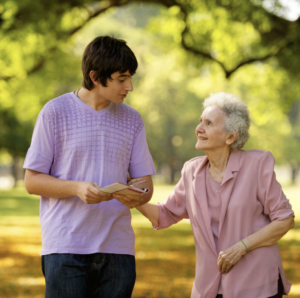
A young man accompanying an elderly woman on a walk Photo credit: Bcbits.com Raining? Really, I’m hardly wet.
As French and Croatian players in the World Cup finals were awarded their medals and congratulated by FIFA president Gianni Infantoni, Vladimir Putin, Emmanuel Macron, and Kolinda Grabar-Kitarović, it began to rain then pour. As weather conditions worsened, the first to receive an umbrella was Kolinda Grabar-Kitarović. No, not exactly. The first to receive protection from the elements was the host, Vladimir Putin. As Putin was sheltered by a large umbrella he did not even have to hold, Grabar-Kitarović, Macron, and Infantoni stood in elements jubilantly embracing players and coaches.
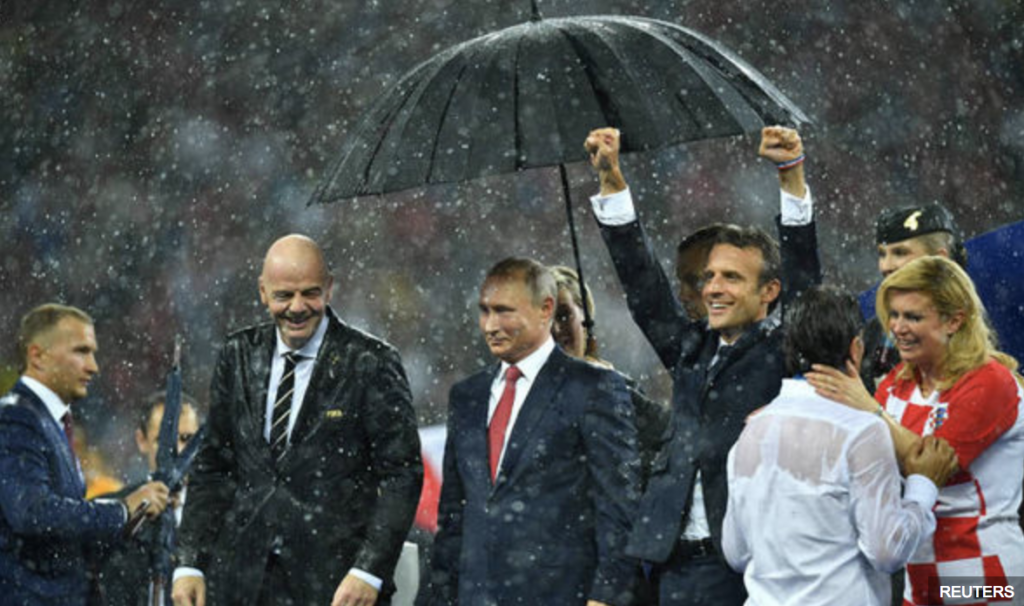
Presidents Macron and Grabar-Kitarović congratulate players and coaches in the pouring rain while President Putin takes cover under the first umbrella. Photo by Reuters. Let us again put aside the titles and the significance of the ceremony. You are hosting three people at your house in your backyard. Suddenly the clouds roll in and it begins to rain then downpour. What do you do? You find an umbrella for yourself. No. This is not an airplane emergency where you are instructed to put your mask on first, then attend to others. You attend to the needs of your guests first.
Trump does not fair better with umbrella courtesy. He also ensured his well-being first under an oversized golf umbrella while Barron and Melanie handled the elements sans parapluie. Maybe the Queen could arrange a lesson in umbrella etiquette for them both.
Leader gestures and their impact on followers
Small gestures say a lot about a leader’s character. A leader is the model of the behavior she wants her followers to emulate. Some followers do in fact imitate what their leader says and does. What messages are Presidents Trump and Putin sending their constituents on how to treat the elderly, family members, countries hosting you, or foreigners visiting your country?
Remember playing Follow-the-leader as a child? A very empowering feeling for a young person knowing every one must pay attention to her every step and action. These simple leader gestures, however, are not a game and need to be taken seriously. Followers can become emboldened by a leader’s irresponsible and anti-social gestures or language. Depending on the leader’s influence and intention, he can incite followers to either bring communities together or have them tear apart the social fabric that keeps us treating one another humanely. I explore the dangers of phony leadership in a previous blog.
A responsible leader gesture
On July 1st, when the Round of 16 of the World Cup was underway, President Kolinda Grabar-Kitarović flew economy class to Russia with other Croatian fans to support their national team. What impact did her small gesture have on her constituents and the team? See for yourself. The Croatian national team deserves full credit for reaching the World Cup Finals. One begs to ask, however, if such pro-social behaviors becoming of a president also contributed to their team’s national and international success?
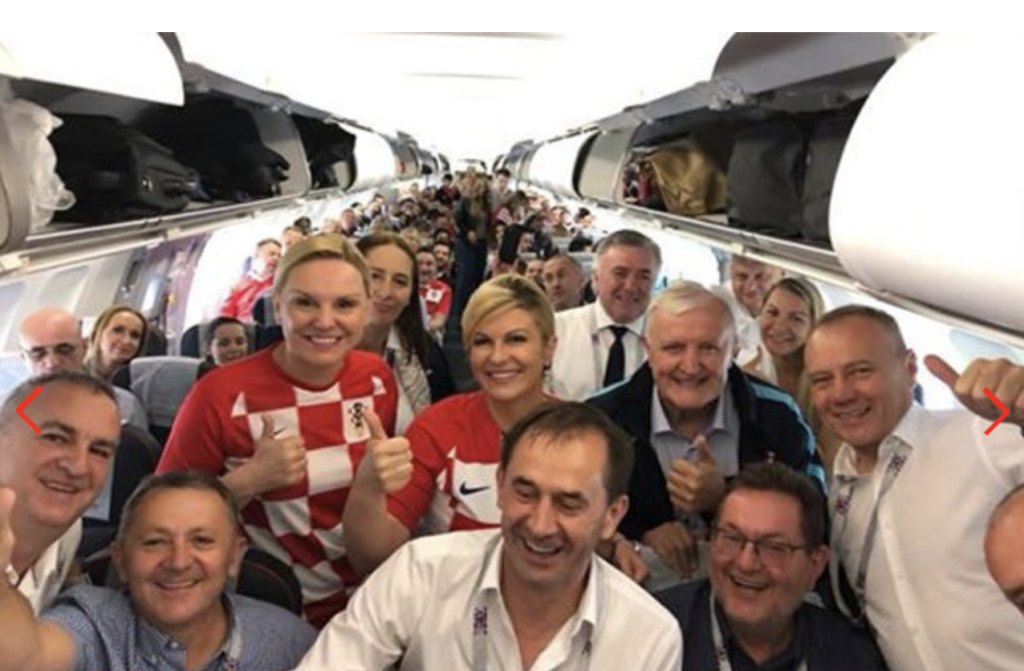
Croatian President Kolinda Grabar-Kitarovic flying economy with passengers to Russia. Facebook/Kolinda Grabar-Kitarović About the author
As a Conflict Alchemist and Human Systems Accelerator Jean-Pierre transforms discord in organizations. He optimizes employee engagement and leadership potential by counseling leaders and enhancing group dynamics. He is the creator of the EPIC Model of development and the author of What You Can Learn from Your Teenager: Lessons in Parenting and Personal Growth.
The numerous benefits of barefoot running
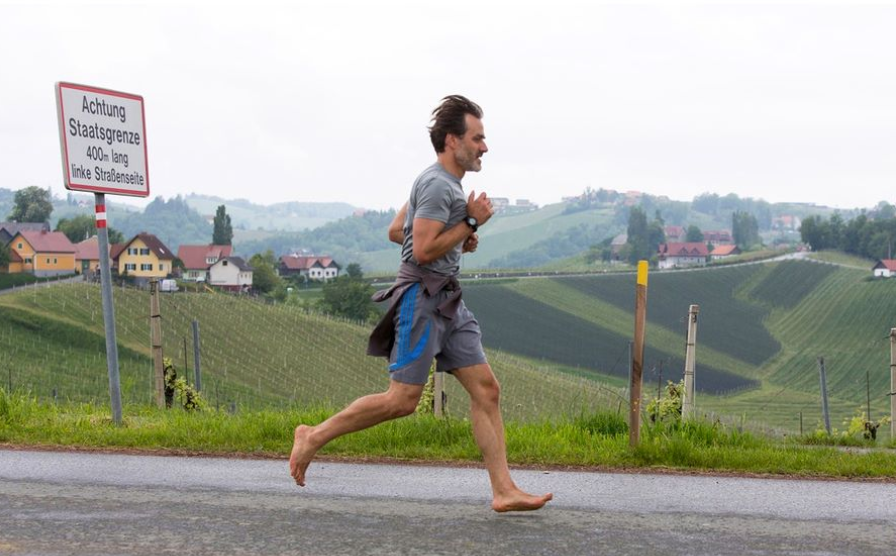
Half Marathon Barefoot run Barefoot running background
Barefoot running occurs naturally as a child. As an adult, it usually begins once you have read “Born to Run”, by Christopher McDougall. At least it did for me. One late summer day in 2010, while reading McDougall’s book about the Tarahumara Indians of Copper Canyon in Mexico, I decided to do something I had yet to even consider.
Overcoming the anxiety of what the neighbors would think, I jogged about 100 meters barefoot up the road and quickly went inside. The sensation I felt connecting with the pavement was amazing. I was no longer running. Every step was one of sensation. Like electricity running through my body, what I felt with every step–through the over 200,000 nerve endings in the soles of my feet–was instantaneously felt throughout my body to the ends of the hairs on my head.
After this unforgettable experience, there was no turning back to running shoes. Barefoot running gave the movement a whole new meaning. It became fun and not a chore. It became a want and not a must. Running became explorative and not exercise. For the next several months I slowly and impatiently transitioned from shod to bare, using my running shoes as hand weights when not in use.
Can you get injured from barefoot running?
Running injuries occur with or without shoes. Other factors to consider are previous injury history, overtraining, fatigue, and technique. Most of my injuries resulted from simply overdoing it. I enjoyed it too much. Eventually, my body forced me to listen. Blood blisters, calf strains, and the worst was a hairline fracture in my left fibula sustained during a 10K race. I still managed to hobble across the finish line.
The most frequently asked questions are ‘Doesn’t it hurt?’ and ’Don’t your feet get cold?’ The answer to both is rarely. Occasionally I step on something sharp. However, after seven years and 2,000 miles of barefoot running, only three small objects penetrated my skin and all were removed with tweezers–a must have. Unlike shoes whose soles wear down over time, the soles of your feet thicken with use, making objects more difficult to penetrate.
Regarding cold weather, as long as my feet are warm from the start, they usually stay warm. It can become a game of mind over matter and where I focus my mental energy. I use my “heat to feet” mantra and actively think about transferring the heat from my upper torso to my lower extremities when running in cold weather. Your body also adapts over time.
Physical benefits of barefoot running
Toenail fungus and runner’s toe are not an issue for me. There are more sweat glands in your feet per square inch than in any other part of your body: 250,000 glands per foot! Barefooting naturally allows your feet to breathe, sweat, and air dry while running. It helps get rid of sock tan lines! Splashing in puddles is also great for cooling off and having fun too.
Barefoot running has built-in anti-injury mechanisms. First, I run shorter distances as it is more physically and mentally demanding. The longest races I have run are half marathons. Second, my pads generally need a day to repair, so I rarely run back to back days. Third, the more I listen to my body, the more I am able to slow down and stop before an injury happens. Fourth, is the benefit of earthing, also known as grounding.
Finally, barefoot running lessens the impact on your knees and hips. Leg stride is shorter and your feet naturally fall underneath your body. Cadence is quicker making foot impact lighter. The entire foot and lower leg are engaged like a shock absorber (Photos 1 & 2). The toes act as stabilizers ensuring balance (Photo 3). A heel strike impact goes directly from your heel bone to your knee and hip joints (Photo 4).
For more information on running economy and technique, watch the short video from Dr. Mark Cucuzzella on Principles of Natural Running.
Heel versus forefoot impact experiment
Heel strike: Stand barefoot on a hard surface. Strike one foot on the floor with just your heel 10 times with some force. How did it feel? Where did you feel the impact?
Forefoot strike: Using your other foot and with the same force, strike the ball of your foot 10 times. Have your heel gently touch the floor and bounce up again. How did it feel? Where did you feel the impact?
Body and Mind Transformation
Before barefoot running, my feet had little to no arch. I have now developed an arch as my feet flex and strengthen with every step. This realignment naturally autocorrects the body from the ground up–remember the hairline fracture–impacting how I stand and walk. I even welcomed the slight gain in height due to a few millimeters with new footpad growth!
Barefoot running involves body and mind. I never run with headphones. Most of my attention goes towards running form and scanning the ground for potential hazards. It is like playing a video game. Look away for too long and…Gotcha! A 30-minute run averaging 180 steps a minute translates to about 5,400 decisions of where to place your feet. That requires some attention.
I had to learn how to run before I could walk
Watch an infant walk without shoes. What do you notice? The child is on her toes. The gait looks more like a cross between walking and running. The child leans slightly forward and she is off! In essence that is running. Watch a toddler with shoes learning to walk. What do you notice? Little Frankenstein. Stiff, awkward, and clumsy movement. The thousands of foot nerve endings are no longer sending her brain the feedback needed for coordination. Her feet are in boxes, making it unnecessarily more complicated to learn how to maintain balance.
After four years of barefoot running, it dawned on me that I might be walking incorrectly! So one day I tried walking with a midfoot/forefoot strike. I was hooked. I call it “active walking” in comparison to “passive walking” or heel striking. With active walking, all foot and lower leg muscles, ligaments, and tendons are activated. A 40-year habit is hard to break. I still catch myself heel striking, especially when I’m in a hurry or wearing shoes with a heel.
Go ahead. Take off your shoes. Let your feet breathe and reconnect with the Earth! Your mind, body, and soles will thank you! If interested you can read another post on Barefoot running and Leadership.
About the Author
Jean-Pierre is a Human Systems Accelerator specializing in conflict resolution, intergenerational dialogue, and team interdependence. He is also a Youth Coach, Author, and Speaker. As the creator of the EPIC Model, Jean-Pierre brings out the expertise in groups by revealing patterns and refining human systems in real-time!
